The smart guide to running in the rain

Running in the rain is fairly inevitable if you are going to maintain your training throughout winter but with the right kit, and the right attitude it can be fun and even beneficial.
When we’ve done more training in the rain we’ve felt more prepared when it comes to wet races, probably because running in the rain gives you a valuable opportunity to work on your mental toughness! Its also good to know what kit works best in the wet so you know what to pick for wet races, and find out what bits rub when you are soaking through!
Download the ebook above.
No one looks forward to wet runs but we’re passed the point now of being put off by the weather - remember there is no such thing as bad weather, just the wrong kit. One thing we have learnt through many winters is that once you are outside it’s never as bad as you thought it would be. Weather looks worse through the window. Just get out there, if nothing else it will feel good when its over!
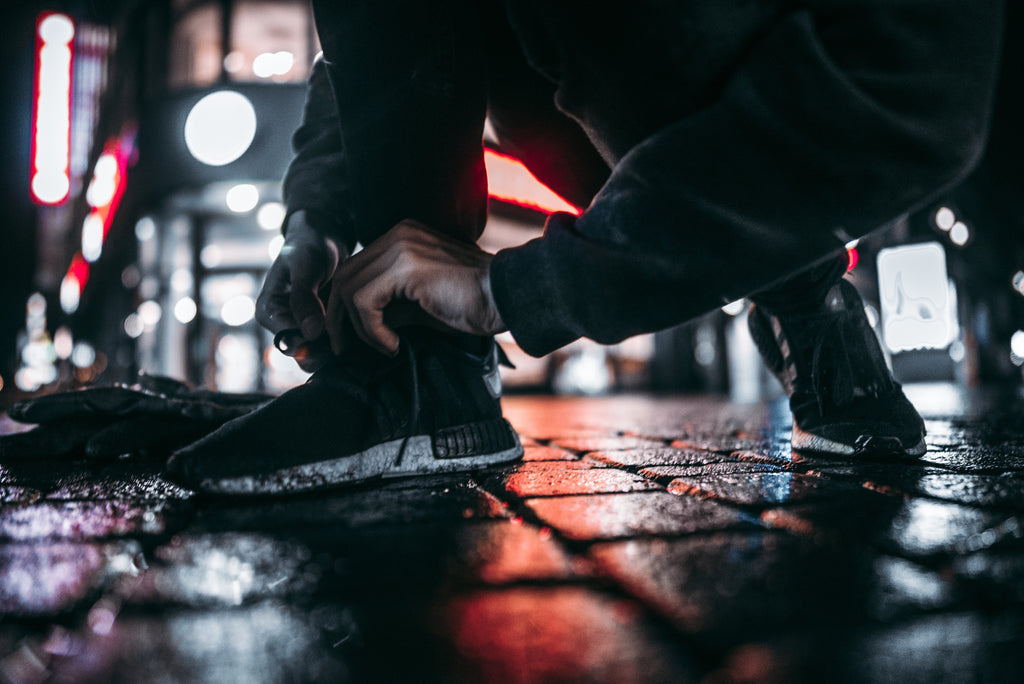
Rain isn't solely a Winter concern, it can be wet and warm too, so over time building up a selection of garments and tech is going to be necessary.
What to wear when running in the rain
Some garments are obvious, others less so - this simple round-up should be all you need to stay warm and protected... and enjoy being part of nature!
-
Wear a cap to keep rain off your face
Wearing a hat when it’s wet is a great way to keep rain out of your eyes and off your face without the problems of eye wear steaming up. Temperature is a consideration so you need a selection of caps and visors in your arsenal of wet weather running kit.
A lightweight, wicking cap is good for most UK conditions. Check its fit is snug but remember sometimes your head can expand a little when exercising and a tight-fitting cap could get very uncomfortable. Check the peak allows you good visibility - especially if you run in urban places.
When it’s very cold your face and particularly ears will appreciate protection from blasts of icy rain and even hail. Fleecy winter caps that come down over your ears are comforting when all the elements are against you. Alternatively, if you have a tendency to overheat, a broad fleece head band can keep your ears warm and protect your eyes from drips whilst allowing heat to escape from the top of your head.

-
Dress in layers and suitable materials
Wet weather can be confusing to dress for as your instinct is to keep dry, however unless you are on a very gentle jog you are better off focusing your efforts on staying warm. Many water-resistant jackets can feel far too hot if you are running hard, only the most technical waterproof jackets can prevent you feeling damp on the inside.
Your next-to-skin base layer is the most important as this transports moisture away from your skin; look for wicking fibres and avoid those free cotton event T-shirts like the plague as they absorb your sweat and leave you clammy.
Wicking base layers should fit snugly, as they need to be touching your skin to work, but allow enough movement to feel comfortable.
Depending on temperature you may need one or two insulating layers. Windproof materials are particularly important when you are damp as wind chill can become a big problem. If you are out for long distances look for windproof and water-resistant garments with the highest breathability factor possible.
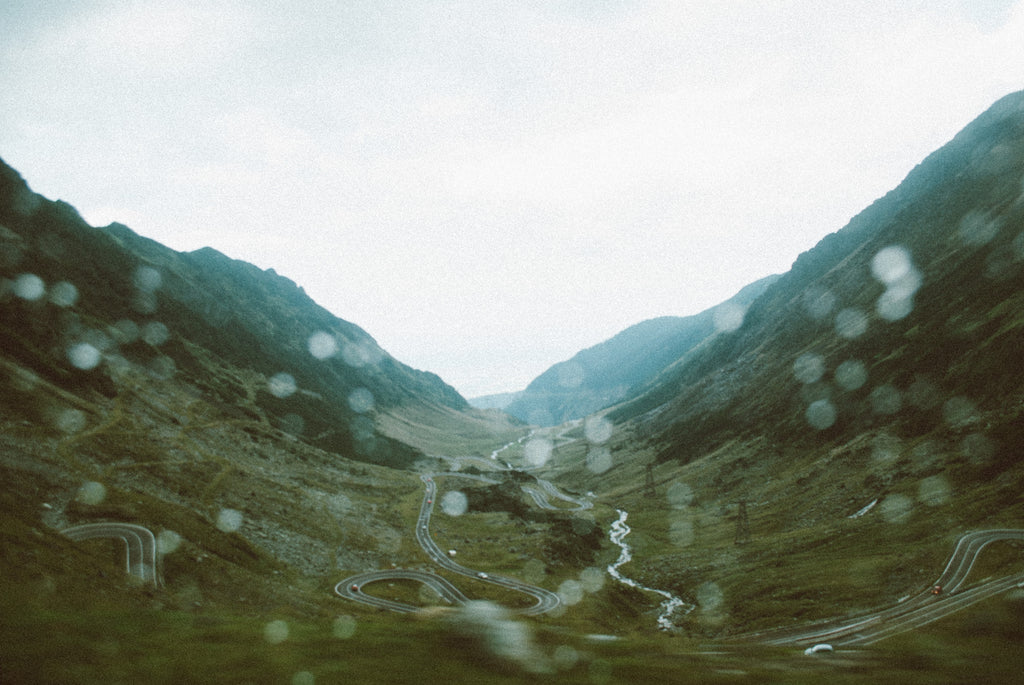
-
Rain doesn’t always mean cold
When you see rain out the window don’t naturally assume it will also be cold, wet days can be very mild, even in winter.
If you're used to running in town be very mindful if you choose to venture into new territories or countryside - even parkland can have very different micro-climates.
Over dressing can lead to over-heating and the extra layers can feel cumbersome and uncomfortable. Modern technical fabrics are thin and lightweight so look to layer up with these for an outfit that is versatile and gives you freedom of movement.
-
Breathable running shoes
Your feet are going to be splashing through a whole load of puddles so look for waterproof GORE-TEX upper material which will keep out the water. The other side to this is that you also need your shoes to be breathable, otherwise your own sweat will lead to dampness and chafing, and at worse blisters.

-
Wicking running socks
Wicking running socks are an essential all year round for preventing blisters but in wet weather are even more critical. Make sure you choose socks with a good fit that don’t wrinkle inside your running shoes and only ever wear specialist running socks that wick away your sweat. Great socks are amazing!
-
Rain protection at races
Black garbage bags or Rain Smoks may be useful for wet race days, (we prefer not to use them) but if you have no other option then you make head and arm holes and they will protect you from the rain and cold while you are penned and in the early miles until you warm up.
Just make sure you give them to a marshal or better still use the provided re-cycle facilities - do not just throw them free of the course, it's not an acceptable behaviour and they can easily become a dangerous trip hazard for other runners behind you.

Bonus tips
-
Use lube to prevent chafing
Chafing can happen in any conditions but is made much worse by the rain. Use an anti-chafe lube or good old Vaseline to prevent chafing anywhere that might rub; seams, nipples, heels, between your toes. If you are doing a long-distance run carry a small pot or tube with you for top ups along the way.
-
Dry Socks, oh yes!
It’s a small luxury but dry socks can make every part of you feel better. For long-distance runs and ultras carrying a spare pare is worth the weight penalty because of the comfort in changing out of your soggy wet socks! Make sure if you can’t dry your feet between changes you do at least reapply your anti-chafe lube.

-
Fuel for motivation & energy
We find eating during wet runs even more important than during our usual training sessions. If the weather is bad, and you are feeling a bit damp and miserable, a couple of bites of something delicious, motivating and tasty can really perk you up, not just physically but mentally too.
We keep our favourite bars for the hardest run, something like the savoury yet sweet taste of the Avanti bar makes it all feel a bit better, even when every step you take squelches and you are drenched to the skin. The other good thing is our bars are robust, so like good runners they don’t disintegrate when they go out in the rain!
After your run refuelling is critical, running in the cold and wet burns more calories so you will probably be hungrier than usual. Your body also needs some support to recover, not just from the physical exercise, but the challenge of dealing with the conditions.
If you are short on time or don’t need a full meal, munching on a Forza bar alongside a hot drink ensures that you get the proteins and carbs needed to recover, plus it tastes good so feels like a reward for a tough run!
-
Keep your electronics dry
Running with a phone is important to stay safe but it will be no use to you if it’s soaking wet and damaged! You can buy fancy waterproof covers or bags but in all honesty a zip-lock freezer bag from your kitchen drawer is just as good.
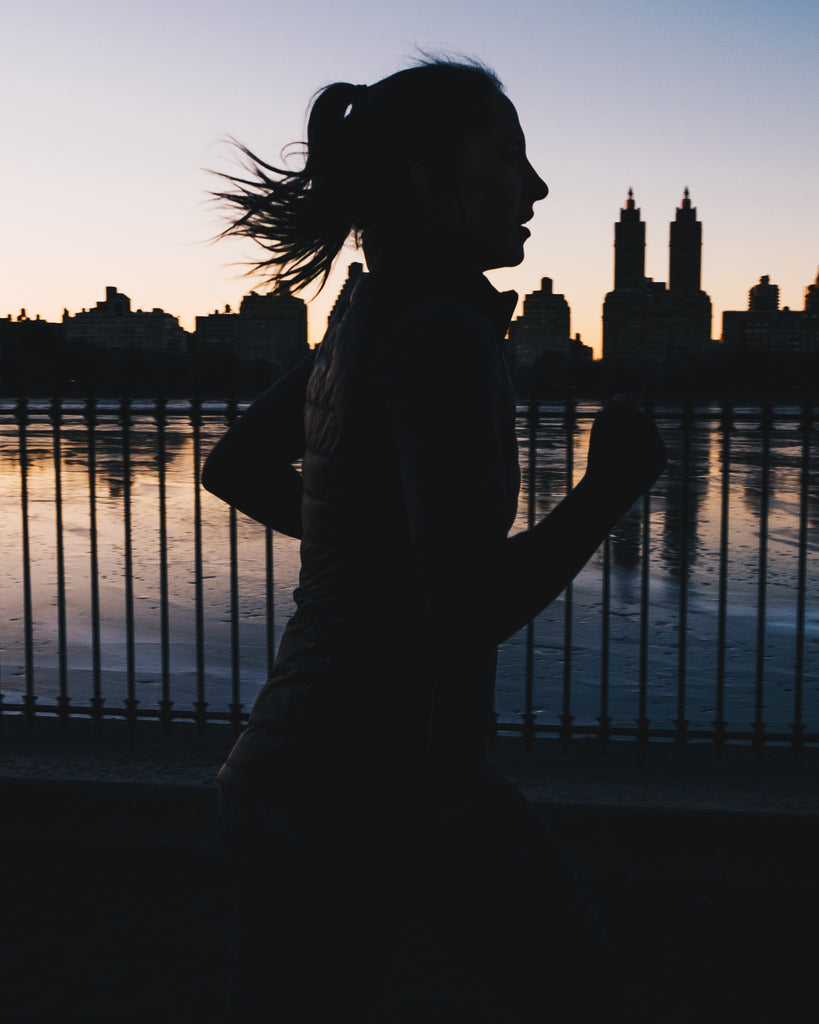
Running safety in the rain & dark
-
Watch your step
Running in the rain can be hazardous so watch your step, keep an eye out for slippery surfaces such as drain covers, wet leaves or road paint. Off-road roots are your nemesis so pick your way across with care. If you can avoid the puddles as these will only soak your feet and can hide deep ankle-turning pot holes.
-
Be seen
Heavy rain is very bad for visibility so do all you can to be seen by other road users and pedestrians. Break out the high-vis kit and wildest of coloured prints and at night make sure you are wearing reflective gear. When the weather is torrential, even in the day time, flashing lights can really help you stand out. A head torch and rear red flasher means you will be seen more easily from both the front and the rear.
-
Fast sessions
Slippery roads are not ideal for hard or fast runs as you can more easily lose your footing as you push off from the ground. Keep your runs on rainy days at a slow to moderate pace which gives you time to scan the terrain ahead and avoid hazards.
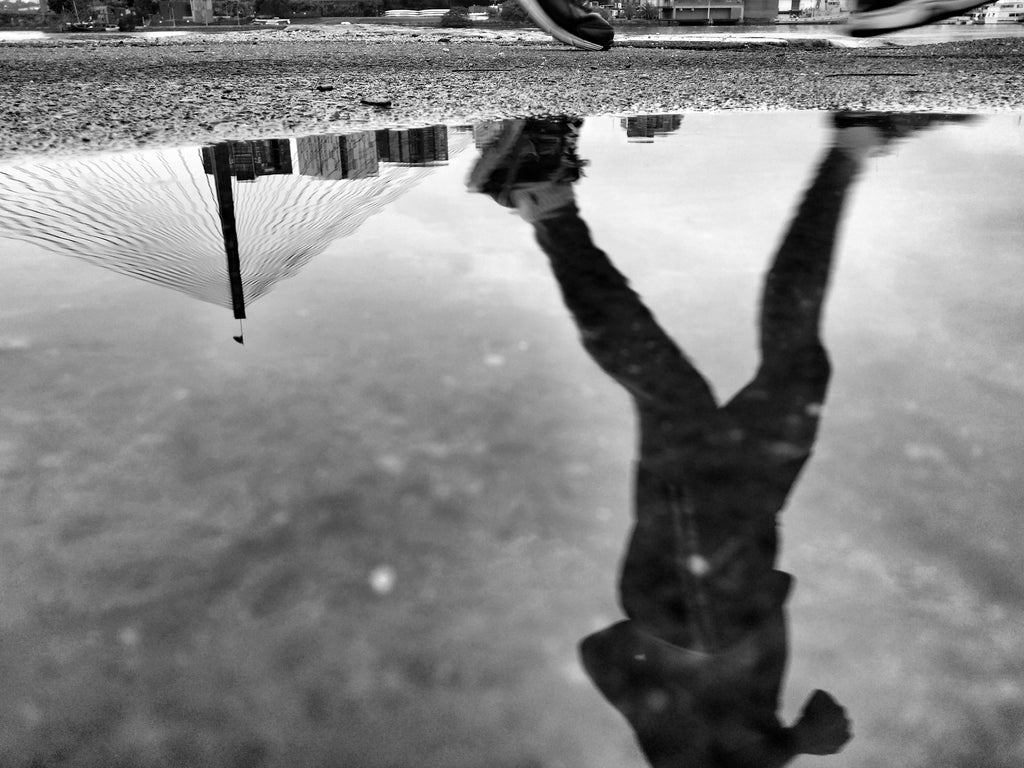
Recovery & equipment care after your run
-
Get into dry clothes
As soon as you finish change out of your wet clothes and into warm dry kit. Once you stop running you will cool down rapidly, so this is the time your body is at its most vulnerable to chills.
Don’t be tempted to hang round at the finish line chatting or even worse drive home without changing. You'll regret it.
-
Look after your kit
Drying your shoes properly after wet runs will stop them from stinking and becoming misshapen. Remove the insoles and dry them separately and then fill the shoes with balled up newspaper to absorb the water. Don’t tumble dry them as this can permanently mess up the fit. A well-ventilated airing cupboard or above a radiator will do just fine.
If you have invested in windproof and water-resistant fabrics for wet conditions make sure you follow washing and dry instructions to protect their technical properties, most need to be washed on cool and not tumble dried. There are loads of DWR treatments you can buy to keep the membrane in good order too.
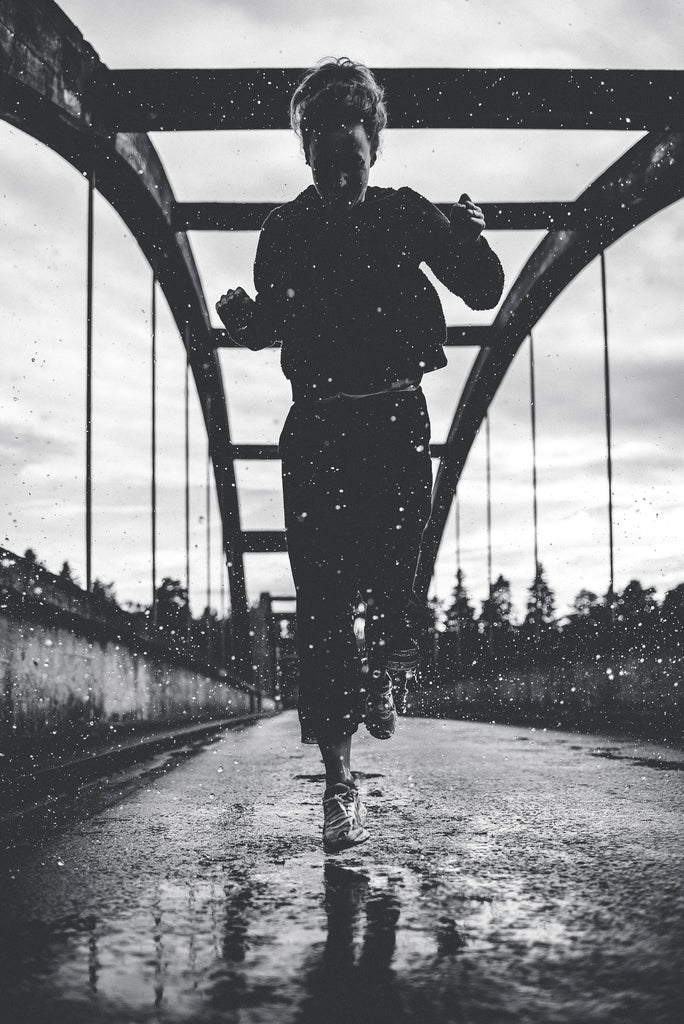
-
Re-fuel fast
Eating something nourishing and tasty is a key part of your recovery as you can burn through more calories when wet and cold than on a dry weather run.
You also deserve a treat for getting out there in bad conditions when many wouldn’t! Our Forza bar is a favourite post-run treat, (so too is a great cup of coffee) - you're looking to consume a specfic ratio of 3:1 carbs:protein as soon as possible after finishing your run (within 30mins ideally). This will help you recover more quickly and get rid of any aches and pains the next day.
It gives us something to look forward to in the final few kms of our runs, good motivation to not drop the pace.
- Tags: Running
